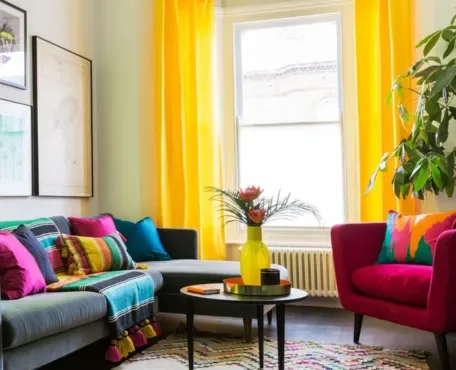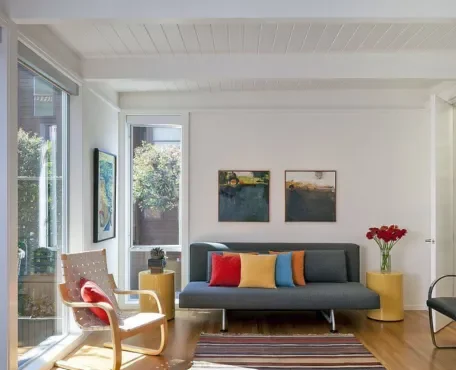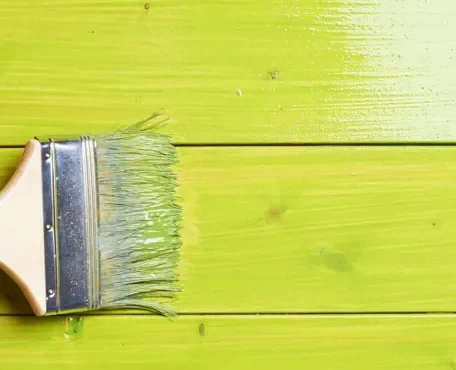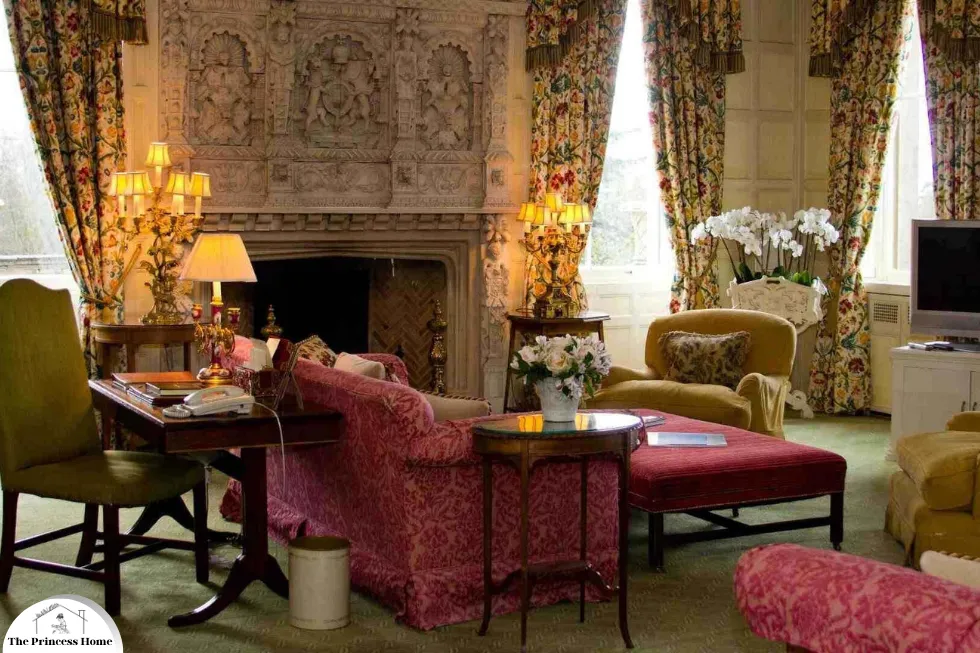
Interior decoration is more than just arranging furniture and selecting a color scheme. It’s an art form that can transform a house into a warm, inviting, and beautiful home. The right interior decoration can have a profound impact on your daily life, from improving your mood to enhancing your productivity. In this comprehensive guide, we will explore various interior decoration tips and tricks to help you create a space that not only reflects your personality but also suits your lifestyle.
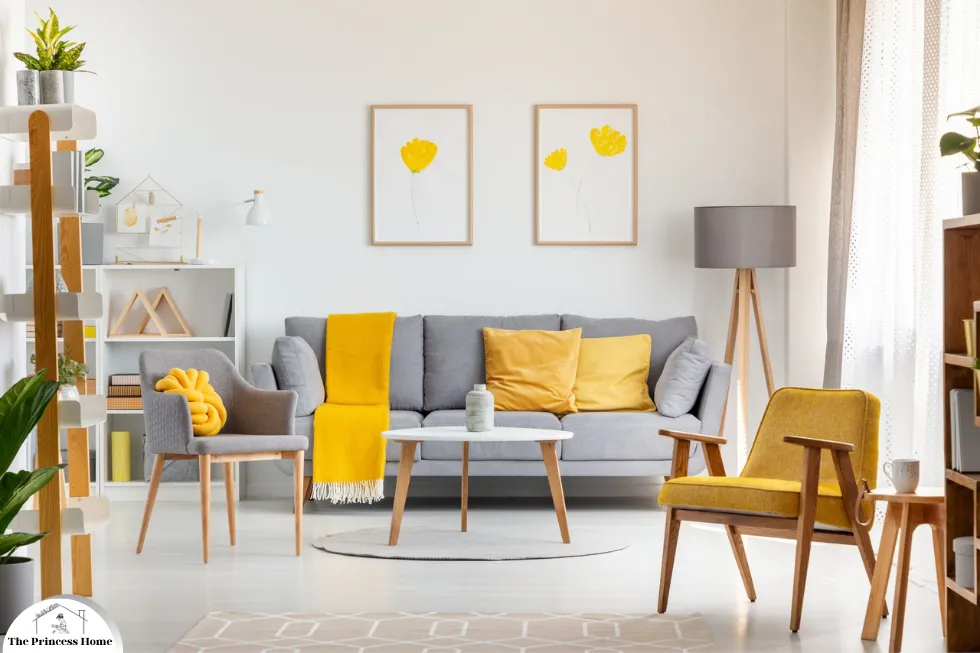
1.Define Your Style
Before diving into the world of interior decoration, it’s essential to define your personal style. Do you prefer a modern, minimalist look, or are you more drawn to traditional, rustic designs? Identifying your style will serve as a foundation for all your decorating decisions. Some popular styles include:
- Contemporary: Clean lines, neutral colors, and minimal clutter.
- Traditional: Timeless, classic elements with rich colors and intricate details.
- Industrial: Utilitarian and rugged, often featuring exposed brick and metal.
- Bohemian: Eclectic and colorful, with a mix of patterns and textures.
Defining your personal style is crucial before embarking on any interior decoration project. Your style preferences will guide your choices and ensure coherence in your design.
Here are some popular interior design styles to consider:
1.Modern:
Characterized by clean lines, sleek surfaces, and a minimalist approach. Modern design often incorporates neutral colors, open spaces, and a focus on functionality.
2.Traditional:
Rooted in classic designs and influenced by historical periods such as Victorian, Colonial, or Georgian. Traditional interiors feature elegant furnishings, rich colors, and ornate details.
3.Rustic:
Inspired by nature and the countryside, rustic style embraces raw materials like wood, stone, and natural textures. It often includes vintage or handmade elements and a cozy, inviting atmosphere.
4.Contemporary:
Similar to modern design but with a focus on current trends and innovations. Contemporary interiors may feature bold accents, unconventional materials, and a mix of styles for a fresh, eclectic look.
5.Transitional:
A blend of traditional and contemporary styles, transitional design offers a balance between classic elegance and modern simplicity. It combines refined furnishings with clean lines and neutral colors for a timeless appeal.
6.Industrial:
Drawing inspiration from urban lofts and old factories, industrial design celebrates raw, unfinished elements like exposed brick, metal accents, and reclaimed wood. It often incorporates utilitarian objects and a sense of gritty authenticity.
7.Coastal:
Reflecting the relaxed vibe of coastal living, this style emphasizes light, airy spaces, natural light, and a palette inspired by the sea and sky. Nautical motifs, woven textures, and casual furnishings contribute to a laid-back, beachy atmosphere.
8.Scandinavian:
Known for its simplicity, functionality, and emphasis on natural light, Scandinavian design features clean lines, minimal ornamentation, and a neutral color palette. It prioritizes comfort and coziness, with hygge-inspired elements like soft textiles and warm wood tones.
Identifying which style resonates most with your preferences and lifestyle will help you create a cohesive and harmonious interior space that reflects your personality and enhances your daily living experience.
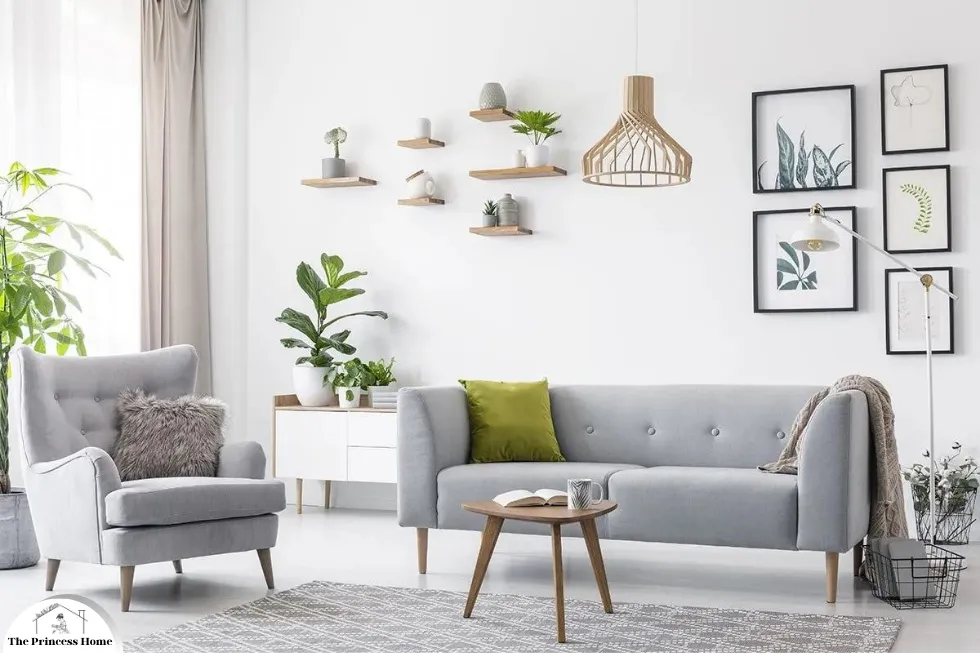
2.Create a Functional Layout
A well-planned layout is crucial for a functional and aesthetically pleasing interior. Consider the flow of your space, ensuring that there’s a logical arrangement of furniture and no obstacles in high-traffic areas.
For example, place the sofa and coffee table within easy reach of each other, and make sure there’s sufficient space to move around. Creating a functional layout is essential for optimizing the usability and comfort of your interior space.
Here are some tips to consider when planning your layout:
1.Assess the Space:
Begin by understanding the dimensions and features of the room. Take note of architectural elements such as windows, doors, and built-in fixtures that may influence the layout.
2.Define Zones:
Determine the primary functions of the space and establish separate zones accordingly. For example, in a living room, you may have zones for seating, entertainment, and relaxation.
3.Consider Traffic Flow:
Ensure there’s enough space for easy movement between furniture pieces and throughout the room. Avoid placing large obstacles in pathways to maintain a smooth flow of traffic.
4.Anchor the Room:
Start by placing the largest furniture pieces, such as sofas or beds, to anchor the space. Arrange these pieces in a way that defines the focal point of the room, such as a fireplace or television.
5.Create Conversation Areas:
Arrange seating to encourage social interaction and conversation. Position sofas and chairs facing each other to facilitate communication and connection.
6.Leave Room for Functionality:
Incorporate functional elements such as storage solutions, workspaces, or designated areas for specific activities like reading or dining.
7.Maximize Natural Light:
Position furniture to take advantage of natural light sources while also considering the placement of artificial lighting fixtures to ensure adequate illumination throughout the space.
8.Maintain Balance:
Distribute furniture and accessories evenly throughout the room to create visual balance and harmony. Avoid overcrowding one area while leaving another sparse.
9.Consider Ergonomics:
Choose furniture with comfort and ergonomics in mind, ensuring that seating heights and depths are appropriate for comfortable use.
10.Experiment and Adjust:
Don’t be afraid to experiment with different layouts and configurations until you find the one that works best for your needs. Be open to making adjustments as you live and interact within the space.
By carefully considering these factors and planning your layout thoughtfully, you can create an interior environment that not only looks great but also functions efficiently and enhances your daily living experience.
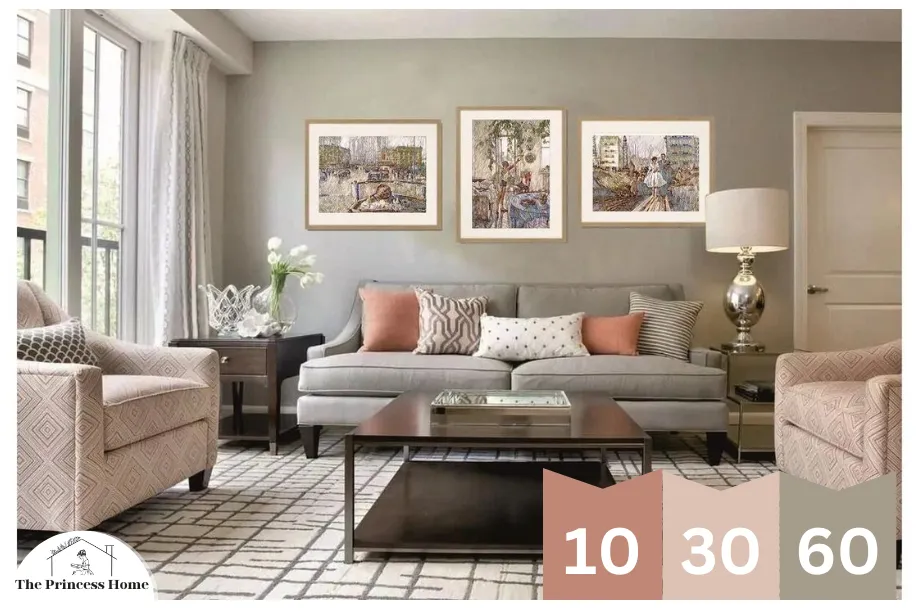
3.Choose the Right Color Palette
Color has a significant impact on the ambiance of a room. The right color palette can make a room feel cozy, bright, or even expansive. Some tips for selecting the right colors:
- Use the 60-30-10 rule: Choose a dominant color (60%), a secondary color (30%), and an accent color (10%).
- Consider the psychology of color; for instance, blue promotes calmness, while red evokes energy.
- Test paint samples on your walls to see how they look in your specific lighting conditions.
Choosing the right color palette is crucial for setting the mood and atmosphere of a room.
Here are some tips to help you select the perfect colors for your space:
1.Consider the Mood:
Think about the mood or ambiance you want to create in the room. Warm colors like reds, oranges, and yellows can evoke coziness and intimacy, while cool colors like blues and greens can create a calming and refreshing atmosphere.
2.Take Lighting Into Account:
Consider the natural light and artificial lighting in the room when choosing colors. Rooms with ample natural light can handle darker colors without feeling too oppressive, while rooms with limited natural light may benefit from lighter, brighter shades to enhance the sense of space and brightness.
3.Use a Base Color:
Start by selecting a base color for the walls, which will serve as the foundation for the rest of the color scheme. Neutral tones like white, beige, or gray are versatile options that provide a timeless backdrop for any style of decor.
4.Experiment with Accent Colors:
Once you have a base color, experiment with accent colors to add interest and personality to the room. Consider complementary or contrasting colors that will complement the base color and create visual depth.
5.Consider the Size of the Room:
Darker colors can make a room feel smaller and more intimate, while lighter colors can make a room feel larger and more spacious. If you have a small room, opt for lighter colors to maximize the sense of space.
6.Create Balance:
Balance is key when selecting a color palette. Aim for a mix of warm and cool tones to create a sense of harmony and balance in the room. You can also use a variety of shades and tones within the same color family to add depth and dimension to the space.
7.Test Samples:
Before committing to a color scheme, test paint samples on the walls to see how they look in different lighting conditions throughout the day. This will help you visualize how the colors will appear in the room and make any necessary adjustments before painting the entire space.
8.Consider the Overall Design Scheme:
Take into account the existing furnishings and decor in the room when selecting a color palette. Choose colors that complement the style and aesthetic of the space to create a cohesive and unified look.
By following these tips and carefully selecting a color palette that suits your preferences and enhances the ambiance of the room, you can create a space that feels inviting, harmonious, and visually appealing.

4.Play with Lighting
Lighting is a crucial aspect of interior decoration. It can dramatically change the mood and functionality of a room. Incorporate various lighting types, such as ambient, task, and accent lighting. Experiment with fixtures like chandeliers, pendant lights, sconces, and floor lamps to create a layered, visually appealing environment. Lighting plays a pivotal role in interior decoration, significantly influencing the mood and functionality of a room.
Here are some tips for incorporating various lighting types to create a layered and visually appealing environment:
1.Ambient Lighting:
Also known as general lighting, ambient lighting provides overall illumination to the entire room. This can be achieved through ceiling-mounted fixtures such as chandeliers, flush mounts, or recessed lighting. Consider the size and height of the room when selecting ambient lighting fixtures to ensure even distribution of light.
2.Task Lighting:
Task lighting is essential for specific activities such as reading, cooking, or working. Incorporate task lighting fixtures such as desk lamps, under-cabinet lights in the kitchen, or adjustable floor lamps near seating areas. These fixtures should provide focused and adjustable illumination to aid in performing tasks efficiently.
3.Accent Lighting:
Accent lighting adds drama and visual interest to a room by highlighting architectural features, artwork, or decorative elements. Use accent lighting fixtures like wall sconces, track lighting, or picture lights to draw attention to focal points and create depth in the space. Experiment with different angles and intensities of light to achieve the desired effect.
4.Layered Lighting:
Combining ambient, task, and accent lighting creates a layered lighting scheme that adds depth and versatility to the room. By incorporating multiple light sources with varying intensities and functions, you can create different lighting scenes to suit different activities and occasions throughout the day.
5.Dimmer Switches:
Install dimmer switches for ambient and task lighting fixtures to adjust the brightness levels according to the time of day or mood. Dimming the lights can create a softer, more intimate ambiance for relaxing evenings or social gatherings.
6.Natural Light:
Maximize natural light sources by keeping windows unobstructed and using sheer curtains or blinds to control glare and privacy. Natural light not only enhances the visual appeal of the room but also provides numerous health benefits such as boosting mood and productivity.
7.Layering Fixtures:
Mix and match different types of lighting fixtures, such as chandeliers, pendant lights, wall sconces, and floor lamps, to add visual interest and personality to the room. Consider the scale, style, and placement of fixtures to create a cohesive and harmonious lighting design.
8.Highlight Architectural Features:
Use lighting to accentuate architectural details such as exposed beams, archways, or alcoves. Grazing or wall-washing techniques can create a dramatic effect by highlighting texture and depth in the surfaces.
By incorporating these lighting techniques and fixtures into your interior design, you can create a well-lit and visually captivating space that enhances both functionality and aesthetics.
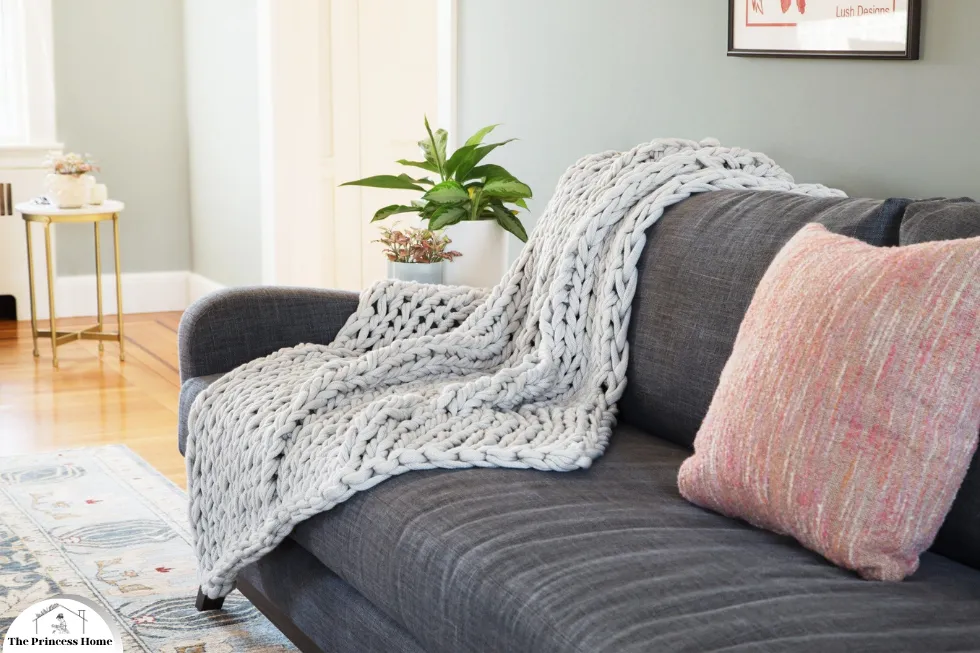
5.Mix and Match Textures
Texture adds depth and interest to your decor. Combine different textures such as smooth, rough, soft, and shiny to create a well-balanced and inviting space. For example, pair a leather couch with a chunky knit throw, or contrast a glass coffee table with a shaggy rug. Mixing and matching textures is a great way to add visual and tactile interest to your decor, creating a layered and inviting space.
Here are some tips for incorporating various textures into your interior design:
1.Smooth and Rough:
Contrast smooth surfaces with rough textures to create dynamic visual interest. For example, pair a sleek, polished wooden table with a rough-hewn stone accent wall or a textured fabric sofa with smooth leather accent chairs.
2.Soft and Hard:
Mix soft, plush textures with harder surfaces for a balanced and cozy feel. Layer soft throw pillows and plush rugs on top of solid wood or metal furniture to create contrast and comfort.
3.Shiny and Matte:
Introduce reflective, shiny surfaces alongside matte textures to add depth and dimension to the room. Incorporate metallic accents such as brass or chrome accessories, mirrors, or glossy finishes on furniture pieces to catch and reflect light.
4.Natural and Synthetic:
Combine natural materials like wood, stone, and rattan with synthetic materials such as glass, metal, and acrylic to create an eclectic and textured look. This juxtaposition adds warmth and character to the space while balancing durability and versatility.
5.Patterned and Solid:
Mix textured patterns with solid colors to add visual interest without overwhelming the space. Incorporate patterned textiles such as rugs, throw pillows, or curtains alongside solid-colored furniture pieces to create a cohesive and harmonious design.
6.Layering Textiles:
Layering different textiles such as wool, linen, cotton, and velvet adds depth and coziness to the room. Mix and match textures through throw blankets, area rugs, upholstery fabrics, and curtains to create a tactile and inviting environment.
7.Consider Scale:
Pay attention to the scale and proportion of textures within the room to ensure a balanced and harmonious look. Mix larger-scale textures like chunky knits or woven rugs with smaller-scale textures like delicate embroidery or intricate patterns for visual variety.
8.Add Greenery:
Incorporating plants and foliage into your decor adds a natural texture that brings life and freshness to the space. Choose a variety of plant species with different leaf shapes and textures to enhance visual interest and create a sense of harmony with the surrounding elements.
By mixing and matching textures in your decor, you can create a rich and multi-dimensional environment that not only looks visually appealing but also feels inviting and comfortable.
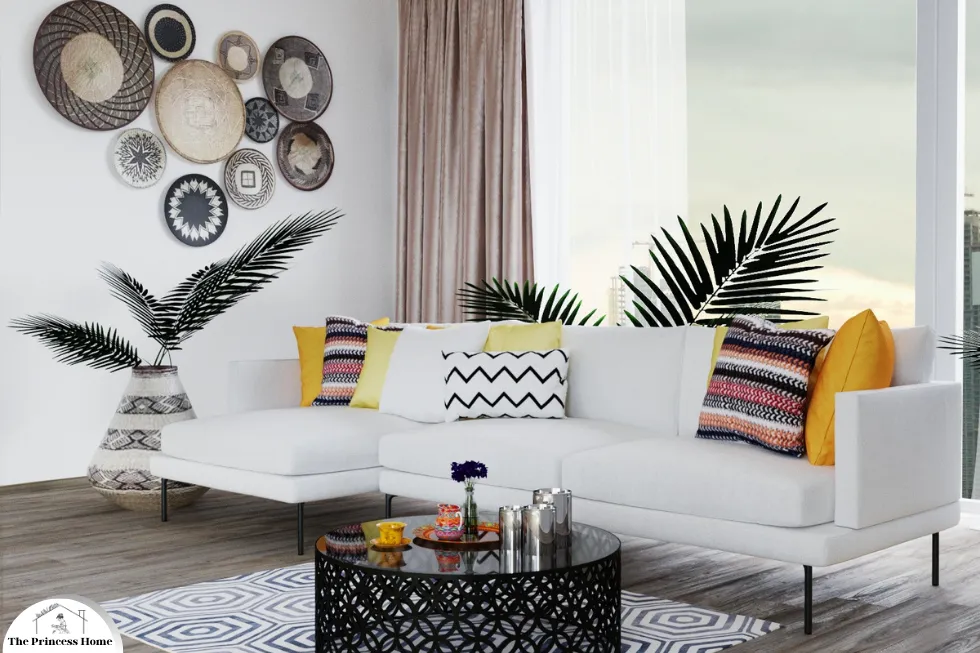
6.Accessorize Thoughtfully
Accessories can be the finishing touches that bring your interior decoration to life. Select decor items that reflect your style and personal interests, but don’t overdo it. Less is often more. Consider incorporating items like decorative pillows, artwork, vases, and candles strategically. Accessorizing thoughtfully can elevate the overall look of your interior decoration, adding personality and charm to your space.
Here are some tips for selecting and incorporating accessories effectively:
1.Reflect Your Style:
Choose accessories that resonate with your personal style and reflect your interests and preferences. Whether you prefer a minimalist aesthetic or a more eclectic vibe, select decor items that align with the overall look and feel of your space.
2.Less is More:
Avoid cluttering your space with too many accessories, as this can overwhelm the room and detract from its beauty. Instead, opt for a curated selection of items that have meaning and significance to you. Remember that simplicity can often make a more significant impact than an abundance of decor.
3.Create Focal Points:
Use accessories to create focal points within the room, drawing attention to specific areas or features. For example, display a statement piece of artwork above the fireplace or place a decorative bowl or vase on a coffee table as a centerpiece.
4.Mix Textures and Materials:
Incorporate a variety of textures and materials in your accessories to add depth and visual interest to the space. Mix and match items like metallic accents, woven baskets, ceramic vases, and glassware to create a dynamic and layered look.
5.Balance and Symmetry:
Arrange accessories in a balanced and symmetrical manner to create a sense of harmony in the room. Place pairs of items such as matching candleholders or bookends on either side of a mantel or shelf to create visual symmetry.
6.Consider Scale:
Pay attention to the scale of your accessories in relation to the size of the furniture and the room itself. Choose larger statement pieces for larger spaces and smaller accents for more intimate areas to maintain balance and proportion.
7.Add Personal Touches:
Incorporate accessories that have personal significance or sentimental value to you, such as family photographs, travel souvenirs, or handmade items. These personal touches can add warmth and character to your space and make it feel uniquely yours.
8.Rotate Seasonally:
Keep your decor fresh and seasonal by rotating accessories throughout the year. Swap out decorative pillows, throws, and tabletop accessories to reflect the changing seasons and keep your space feeling updated and inviting.
By accessorizing thoughtfully and selectively, you can add the perfect finishing touches to your interior decoration, creating a space that is beautiful, functional, and uniquely reflective of your personal style.
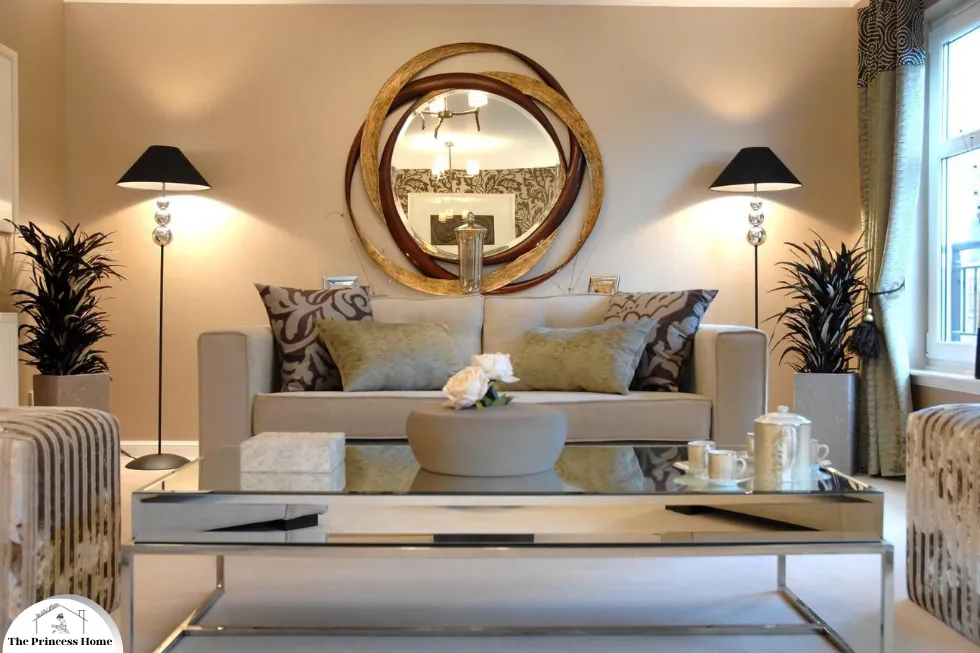
7.Use Mirrors to Create Space
Mirrors are excellent tools for making a room feel larger and brighter. Place mirrors strategically to reflect light and open up your space. They can also be stylish decor elements, available in various shapes and frames to suit your style. Mirrors are versatile and effective tools for creating the illusion of space and brightness in a room.
Here’s how you can use them strategically to enhance your space:
1.Maximize Natural Light:
Place mirrors on walls opposite windows to reflect natural light into the room. This not only brightens the space but also makes it feel more expansive and open. Consider positioning mirrors adjacent to or across from windows to maximize the amount of light they reflect.
2.Create Depth:
Hang mirrors on walls to create the perception of depth in a room. By reflecting other areas of the room, mirrors can visually extend the space, making it feel larger than it actually is. This is especially effective in smaller rooms or narrow hallways where space is limited.
3.Choose the Right Size and Placement:
Select mirrors that are proportionate to the size of the wall and the room. Larger mirrors tend to have a more significant impact on making a space feel larger, but be mindful not to overwhelm the room with an oversized mirror. Additionally, consider the height at which you hang the mirror to ensure it reflects the desired areas effectively.
4.Opt for Statement Mirrors:
Make mirrors a focal point in your decor by choosing statement pieces with unique shapes, frames, or decorative details. A stylish mirror can serve as both a functional and decorative element, adding visual interest to the room while also enhancing its sense of space.
5.Use Mirrored Furniture:
Incorporate mirrored furniture such as side tables, consoles, or cabinets to add reflective surfaces to the room. Mirrored furniture not only serves a practical purpose but also amplifies the light and creates a sense of airiness in the space.
6.Consider Mirrored Accents:
Integrate mirrors into your decor through smaller accents such as mirrored trays, decorative wall panels, or mosaic tiles. These subtle touches can still contribute to the overall brightness and openness of the room while adding visual texture and interest.
7.Reflect Architectural Features:
Use mirrors to highlight architectural features such as arched doorways, alcoves, or interesting angles. Positioning mirrors strategically to reflect these elements can draw attention to them and enhance the overall design of the room.
By incorporating mirrors strategically into your interior design, you can effectively maximize space, increase brightness, and create a more visually appealing and expansive environment.
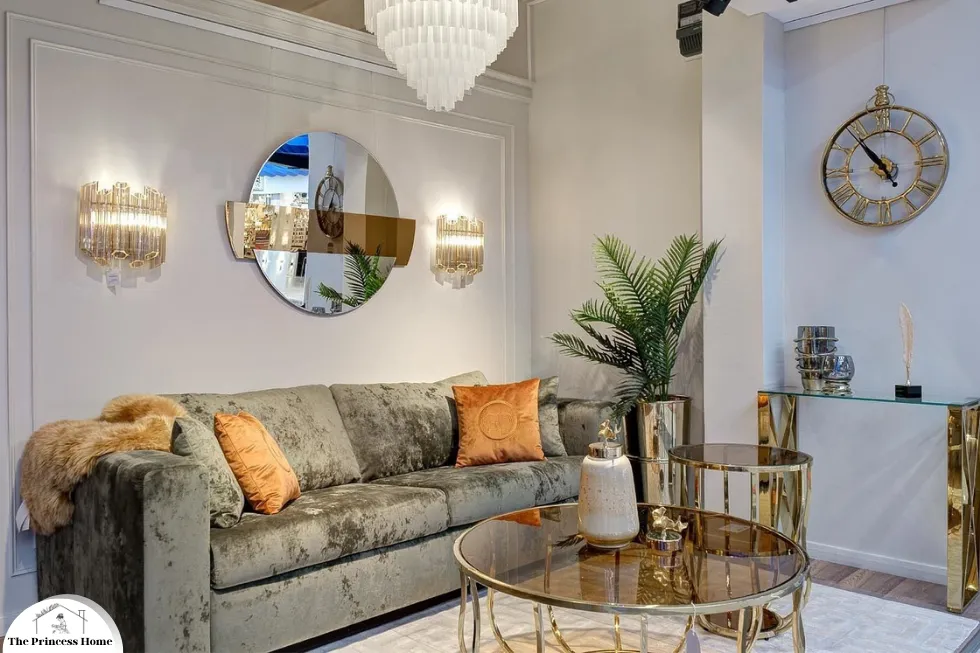
8.Invest in Quality Furniture
Investing in high-quality furniture is a wise decision for interior decoration. Quality pieces not only look better but also last longer, saving you money in the long run. Consider the functionality, comfort, and durability of furniture before making a purchase.
Investing in high-quality furniture is a prudent choice when it comes to interior decoration. Quality pieces not only enhance the aesthetic appeal of your space but also offer numerous benefits in terms of functionality, comfort, and longevity.
Here are some reasons why investing in quality furniture is worthwhile:
1.Enhanced Appearance:
High-quality furniture tends to have superior craftsmanship and attention to detail, resulting in a more refined and elegant appearance. Quality materials, such as solid wood or genuine leather, often have a richer and more luxurious look that can elevate the overall aesthetic of your room.
2.Longevity:
Quality furniture is built to last, with sturdy construction and durable materials that withstand daily wear and tear. Investing in well-made pieces means you won’t have to replace them as frequently, saving you money in the long run and reducing environmental waste.
3.Comfort and Support:
Quality furniture is designed with comfort and ergonomics in mind, providing better support for your body and enhancing your overall comfort level. Whether it’s a plush sofa with supportive cushions or a well-crafted dining chair that promotes proper posture, investing in quality ensures that you’ll enjoy your furniture for years to come.
4.Timeless Design:
High-quality furniture often features timeless design elements that transcend trends and fads. By choosing classic pieces with enduring style, you can create a timeless interior that remains stylish and relevant for years to come, regardless of changing tastes or decor trends.
5.Value for Money:
While high-quality furniture may come with a higher upfront cost, it offers excellent value for money over time. By investing in durable, long-lasting pieces, you’ll avoid the need for frequent replacements and costly repairs, ultimately saving you money in the long term.
6.Environmental Considerations:
Quality furniture is typically made from sustainable materials and manufactured using environmentally responsible practices. By choosing well-made pieces that are built to last, you can reduce your environmental footprint and contribute to a more sustainable future.
When shopping for furniture, carefully consider factors such as craftsmanship, materials, and construction techniques to ensure you’re investing in quality pieces that will enhance your space for years to come. While the initial cost may be higher, the long-term benefits of quality furniture far outweigh the short-term savings of cheaper alternatives.
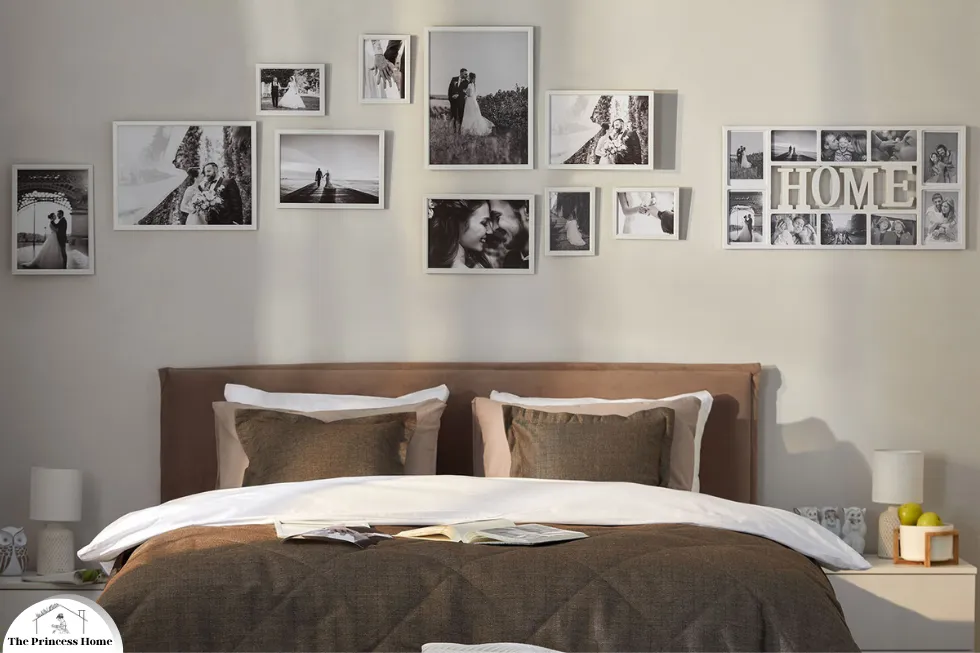
9.Personalize Your Space
Your home should be a reflection of your personality and experiences. Incorporate personal touches such as family photos, souvenirs, or heirlooms to make your space uniquely yours. Personalizing your space is key to creating a home that feels truly yours and reflects your personality and life experiences.
Here are some ideas for incorporating personal touches into your interior decor:
1.Family Photos:
Display framed photographs of cherished memories with family and friends. Create a gallery wall or cluster frames on a shelf or mantel to showcase your favorite moments and loved ones.
2.Travel Souvenirs:
Incorporate souvenirs and mementos from your travels to add a sense of adventure and wanderlust to your space. Display items such as postcards, artwork, or keepsakes collected from different destinations around the world.
3.Heirlooms and Antiques:
Showcase family heirlooms, antiques, or vintage pieces that have sentimental value or historical significance. Whether it’s a piece of furniture passed down through generations or a collection of antique china, these items add character and tell a story of your heritage.
4.Artwork and Collections:
Display artwork and collections that reflect your interests and passions. Whether you’re a fan of contemporary art, vintage posters, or photography, curate a gallery wall or display shelves to showcase your favorite pieces.
5.Handmade Crafts:
Incorporate handmade crafts and DIY projects to add a personal touch to your decor. Whether it’s a hand-knitted blanket, a quilt passed down from a loved one, or pottery made by local artisans, these handmade items add warmth and individuality to your space.
6.Favorite Books and Music:
Display your favorite books, albums, or instruments as decor elements that reflect your interests and hobbies. Create a cozy reading nook with a bookshelf filled with your favorite novels, or showcase your vinyl collection on a stylish record player stand.
7.Personal Collections:
Showcase collections of items that hold special meaning to you, whether it’s vintage cameras, seashells collected from beach trips, or sports memorabilia. Display these collections in curated vignettes or on dedicated shelves to add personality and charm to your space.
8.DIY Artwork and Photos:
Create your own artwork or photography to personalize your space further. Whether it’s a painting, a collage, or a series of photographs taken during your travels or everyday life, incorporating your own creations adds a unique and personal touch to your decor.
By incorporating these personal touches into your interior decor, you can create a space that not only looks beautiful but also feels truly yours, reflecting your personality, interests, and experiences.

10.Stay Organized
An organized space is not only visually appealing but also functional. Use storage solutions like shelves, cabinets, and built-in storage to keep clutter at bay. A clutter-free environment can have a calming effect on your mind. Maintaining an organized space is essential for creating a visually appealing and functional environment.
Here are some tips for staying organized in your home:
1.Declutter Regularly:
Start by decluttering your space regularly to get rid of items you no longer need or use. Donate or discard items that are taking up unnecessary space and only keep belongings that serve a purpose or bring you joy.
2.Utilize Storage Solutions:
Invest in storage solutions such as shelves, cabinets, baskets, and bins to help keep your belongings organized and out of sight. Maximize vertical space by installing shelving units or wall-mounted organizers to store items efficiently.
3.Assign Homes for Items:
Designate specific storage areas for different categories of items and make sure to return them to their designated homes after use. This will help prevent clutter from accumulating and make it easier to find things when you need them.
4.Label Containers and Shelves:
Use labels to identify the contents of storage containers, shelves, and drawers. This makes it easier to locate items quickly and ensures that everything has a designated place.
5.Create Zones:
Organize your space into functional zones based on activities or purposes. For example, create a designated workspace with a desk and storage for office supplies, or designate a specific area for hobbies or activities such as crafting or reading.
6.Implement Daily Habits:
Develop daily habits such as tidying up before bed or spending a few minutes each day to put things back in their place. Consistency is key to maintaining an organized space and preventing clutter from building up over time.
7.Streamline Your Possessions:
Simplify your belongings by keeping only the essentials and getting rid of duplicates or items you no longer need. Adopt a minimalist mindset and focus on quality over quantity when it comes to purchasing new items for your home.
8.Use Multifunctional Furniture:
Choose furniture pieces that offer built-in storage or multifunctional features to maximize space efficiency. For example, opt for a storage ottoman that doubles as a coffee table or a bed frame with built-in drawers for extra storage.
By incorporating these organization strategies into your daily routine and home decor, you can create a clutter-free and functional environment that promotes a sense of calm and well-being.
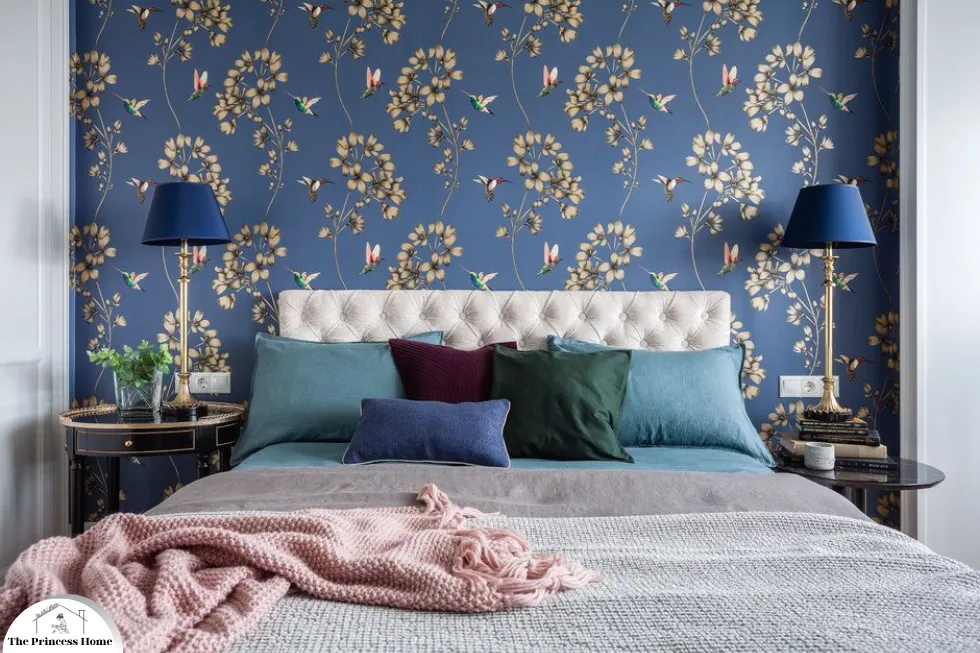
11.Balance Patterns and Colors
When using patterns and colors, aim for a balanced approach. If you have a bold, patterned wallpaper, balance it with solid-colored furniture and decor. Conversely, if you have neutral walls, you can introduce vibrant patterns through throw pillows, curtains, or rugs. Achieving a balanced combination of patterns and colors is essential for creating a cohesive and visually pleasing interior design.
Here are some tips to help you strike the right balance:
1.Start with a Focal Point:
Choose one main element in the room to serve as the focal point, such as a bold patterned wallpaper, an intricately designed area rug, or a vibrant piece of artwork. Let this focal point set the tone for the rest of the room’s color and pattern scheme.
2.Mix Scale and Proportion:
Incorporate patterns of varying scales and proportions to add visual interest and depth to the space. Pair large-scale patterns with smaller-scale ones to create a harmonious balance and prevent the room from feeling overwhelming.
3.Use the 60-30-10 Rule:
Follow the 60-30-10 rule when selecting colors for your decor. Allocate 60% of the room’s color to a dominant hue, 30% to a secondary color, and 10% to an accent color. This creates a balanced color scheme that is visually appealing and cohesive.
4.Balance Bold Patterns with Solids:
If you have a bold, patterned element in the room, such as wallpaper or upholstery fabric, balance it with solid-colored furniture and decor pieces. This helps to ground the space and prevents the patterns from overpowering the room.
5.Introduce Patterns Through Accessories:
If your walls are neutral, you can introduce vibrant patterns through accessories such as throw pillows, curtains, rugs, or decorative accents. This allows you to add visual interest and personality to the room without overwhelming the space.
6.Consider Color Psychology:
Take into account the psychological effects of colors when choosing your color scheme. Warm colors like reds, oranges, and yellows can create a cozy and energetic atmosphere, while cool colors like blues and greens can evoke a sense of calm and relaxation.
7.Create Contrast:
Use contrasting colors and patterns to create visual impact and focal points within the room. Pair complementary colors or juxtapose different patterns to add excitement and drama to the space.
8.Edit and Refine:
Step back periodically to assess the overall balance of patterns and colors in the room. Edit and refine your choices as needed to ensure a cohesive and harmonious design that reflects your personal style and preferences.
By following these guidelines and balancing patterns and colors thoughtfully, you can create a well-designed and visually appealing interior space that is both stylish and harmonious.
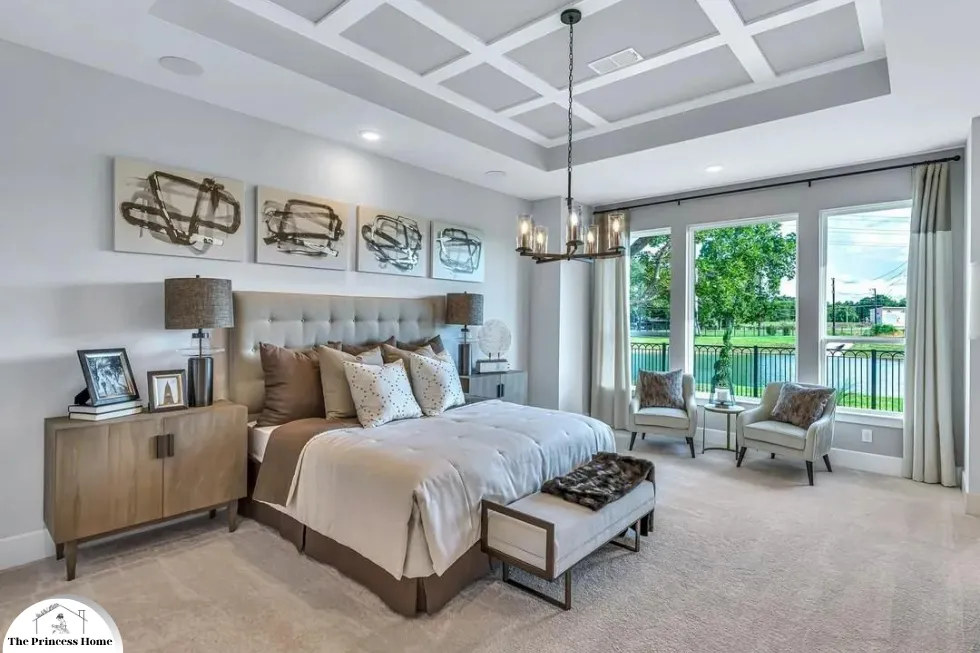
12.Create Focal Points
Focal points draw attention and provide a sense of cohesion in a room. They can be created with a statement piece of furniture, a piece of artwork, or an eye-catching light fixture. Ensure that your chosen focal point complements the room’s overall style. Creating focal points in a room is essential for directing attention and establishing a sense of cohesion in your interior design.
Here are some tips for creating effective focal points:
1.Statement Furniture:
Choose a piece of furniture that serves as a focal point, such as a bold and stylish sofa, an intricately designed dining table, or a luxurious bed frame. Position this piece in a prominent area of the room to draw the eye and anchor the space.
2.Artwork:
Hang a large piece of artwork or a gallery wall of smaller pieces to create a visually striking focal point. Select artwork that complements the room’s color scheme and style, and position it at eye level for maximum impact.
3.Eye-catching Light Fixture:
Install a dramatic light fixture, such as a chandelier, pendant light, or sculptural floor lamp, to serve as a focal point in the room. Choose a fixture that reflects the overall style of the space and adds visual interest and ambiance.
4.Architectural Features
: Highlight architectural features such as a fireplace, built-in shelving, or an arched doorway to create a focal point in the room. Enhance these features with decorative elements or accent lighting to draw attention and add depth to the space.
5.Natural Elements:
Incorporate natural elements such as a large indoor plant, a statement-making stone wall, or a breathtaking view through a window to create a focal point that brings the outdoors in. These elements add texture and visual interest while connecting the room to its surroundings.
6.Color Contrast:
Use color contrast to create focal points within the room. Paint an accent wall in a bold or contrasting color, or introduce colorful furnishings or accessories to draw attention to specific areas of the space.
7.Texture and Pattern:
Incorporate texture and pattern to create focal points that add depth and visual interest to the room. Consider using textured wallpaper, a patterned area rug, or a statement piece of furniture upholstered in a bold fabric to capture attention and create a sense of drama.
8.Symmetry and Balance:
Arrange furniture and decor symmetrically around the focal point to create a sense of balance and harmony in the room. This helps to emphasize the focal point and creates a cohesive and inviting atmosphere.
By incorporating these focal point ideas into your interior design, you can create visually stunning and well-balanced spaces that capture attention and provide a sense of cohesion and style.

13.Layer Rugs
Layering rugs is a design technique that can add depth and interest to your space. Place a smaller, decorative rug on top of a larger, neutral rug to create a cozy and visually appealing look. Ensure that the patterns and colors of the rugs harmonize with the room’s decor. Layering rugs is a creative design technique that adds depth, texture, and visual interest to your space.
Here’s how you can effectively layer rugs to enhance your room’s decor:
1.Choose a Neutral Base Rug:
Start by selecting a larger, neutral-colored rug that serves as the base layer. A solid-colored or subtly patterned rug works well as the foundation for layering.
2.Select a Smaller Decorative Rug:
Choose a smaller, decorative rug with a contrasting pattern or texture to layer on top of the base rug. This rug will serve as the focal point and add visual interest to the space.
3.Harmonize Patterns and Colors:
Ensure that the patterns and colors of the rugs harmonize with the room’s decor and existing color scheme. Consider complementary or contrasting colors that enhance the overall aesthetic of the space.
4.Experiment with Texture:
Mix and match rugs with different textures to create a layered look that adds dimension to the room. For example, pair a plush, shaggy rug with a flat-woven or sisal rug for an interesting contrast in texture.
5.Placement and Orientation:
Experiment with different placement and orientation options for the layered rugs to find the most visually appealing arrangement. You can position the smaller rug at an angle or slightly off-center to create a dynamic focal point.
6.Consider Functionality:
Take into account the functionality and traffic flow of the space when layering rugs. Ensure that the rugs are securely anchored to prevent slipping and tripping hazards, especially in high-traffic areas.
7.Layer in Different Rooms:
Don’t limit yourself to just the living room – layering rugs can also be effective in other rooms such as the bedroom, dining room, or entryway. Use the same principles of color coordination, pattern harmony, and texture contrast to create cohesive and stylish looks throughout your home.
8.Accessorize to Enhance:
Once the rugs are layered, accessorize the space with complementary decor elements such as throw pillows, blankets, or accent furniture to further enhance the layered look and tie the room together.
By following these tips and techniques, you can master the art of layering rugs to create a cozy, visually appealing, and inviting space that reflects your personal style and adds warmth and character to your home.
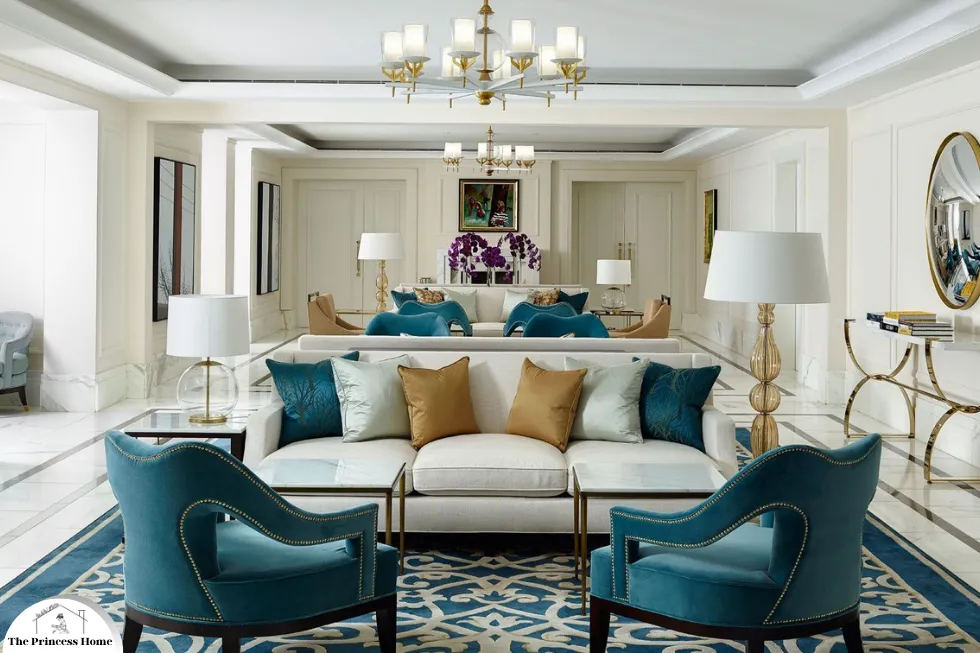
14.Harmonize Open Floor Plans
If you have an open floor plan that combines multiple living spaces, use a consistent color palette and design elements to create a sense of unity. Consider using area rugs, varying lighting fixtures, or a common color thread to tie the spaces together while maintaining distinct functionalities. Harmonizing an open floor plan requires thoughtful design choices to ensure continuity and cohesion while still defining distinct living spaces.
Here are some strategies to achieve harmony in an open floor plan:
1.Consistent Color Palette:
Use a consistent color palette throughout the open space to create a cohesive look. Choose two or three main colors that complement each other and use them consistently across different areas of the room. This helps tie the spaces together visually while allowing each area to maintain its individuality.
2.Design Continuity:
Maintain continuity in design elements such as flooring, cabinetry, and trim work. Using consistent materials and finishes throughout the space helps create a seamless transition from one area to another, enhancing the sense of unity in the open floor plan.
3.Area Rugs:
Use area rugs to define and delineate different functional areas within the open space. Select rugs with similar colors or patterns to create visual cohesion, while varying the sizes and shapes to correspond to the layout of each area. This helps anchor furniture groupings and adds warmth and texture to the space.
4.Varying Lighting Fixtures:
Incorporate a variety of lighting fixtures to illuminate different areas of the open floor plan while maintaining a cohesive look. Choose fixtures with a similar design style or finish to tie the spaces together visually, but vary the types and placement of lights to accommodate the specific needs of each area.
5.Common Color Thread:
Introduce a common color thread or accent color that appears throughout the open floor plan. This could be through accessories such as throw pillows, artwork, or accent furniture pieces. The consistent use of this color helps create visual harmony and reinforces the connection between different areas of the space.
6.Functional Zones:
Define functional zones within the open floor plan based on activities such as cooking, dining, and lounging. Arrange furniture and accessories to create distinct areas for each function, while ensuring that the overall layout flows seamlessly from one zone to another.
7.Use of Dividers:
If desired, use room dividers or architectural features such as partial walls, columns, or built-in shelving to visually separate different areas of the open floor plan. These elements can provide definition and structure while still allowing for an open and airy feel.
8.Flexibility and Adaptability:
Keep in mind that open floor plans offer flexibility and adaptability, allowing you to rearrange furniture and decor to suit your changing needs and preferences over time. Embrace this versatility while maintaining the overarching sense of harmony in the design.
By implementing these strategies, you can create a harmonious and unified open floor plan that seamlessly combines multiple living spaces while still allowing each area to maintain its unique identity and functionality.
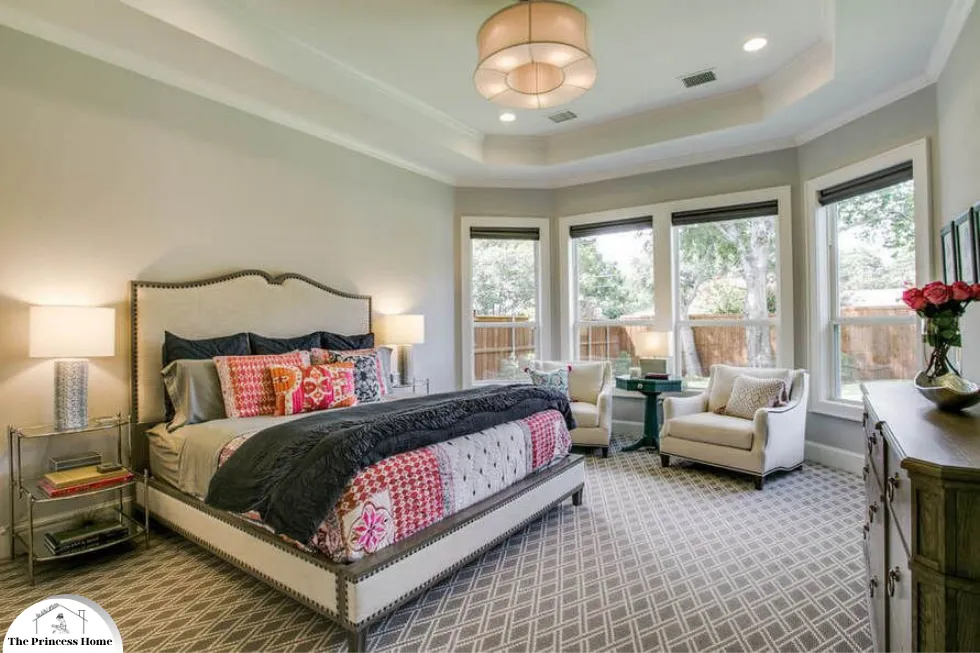
15.Pay Attention to Scale
Properly scaled furniture is essential to avoid overcrowding or underutilizing your space. Ensure that the size and proportions of your furniture align with the room’s dimensions. For instance, in a small room, choose compact furniture to maximize space, while larger rooms can accommodate bigger, more substantial pieces. Paying attention to scale is crucial when selecting furniture for your space to ensure optimal functionality and aesthetics.
Here’s why scale matters and how to get it right:
1.Avoid Overcrowding:
Choosing furniture that is proportionate to the size of your room prevents overcrowding and allows for comfortable movement and flow. In smaller rooms, opt for compact furniture pieces to avoid overwhelming the space and create a more open feel.
2.Maximize Space:
Properly scaled furniture helps maximize the available space in your room, making it more functional and efficient. By selecting furniture that fits well within the room’s dimensions, you can optimize both floor space and visual appeal.
3.Create Balance:
Balancing the scale of furniture with the size of the room and other elements within it, such as architectural features and decor, helps create a harmonious and visually pleasing environment. Oversized furniture in a small room can make the space feel cramped, while undersized furniture in a large room can look disproportionate and out of place.
4.Consider Proportions:
Pay attention to the proportions of individual furniture pieces in relation to one another and to the room as a whole. For example, in a living room with high ceilings, tall bookcases or floor-to-ceiling curtains can help fill the vertical space and create a sense of balance.
5.Functionality:
Scale also affects the functionality of your furniture. Ensure that seating pieces are comfortable and appropriately sized for the intended use, and that tables and storage units are at a comfortable height for easy access and usability.
6.Visual Impact:
Properly scaled furniture contributes to the overall visual impact and aesthetic appeal of your space. Well-proportioned furniture enhances the room’s design and complements other elements such as lighting, decor, and architectural features.
7.Room Layout:
Consider the layout of your room and how different furniture pieces will interact with one another. Arrange furniture in a way that allows for comfortable circulation and conversation, taking into account factors such as traffic flow and focal points.
8.Measure Before Buying:
Before purchasing furniture, take accurate measurements of your room, including dimensions, doorways, and any obstacles that may affect furniture placement. Use these measurements to determine the appropriate scale and size of furniture for your space.
By paying attention to scale and selecting furniture that is appropriately sized for your room, you can create a well-balanced and functional interior that maximizes space and enhances the overall design aesthetic.
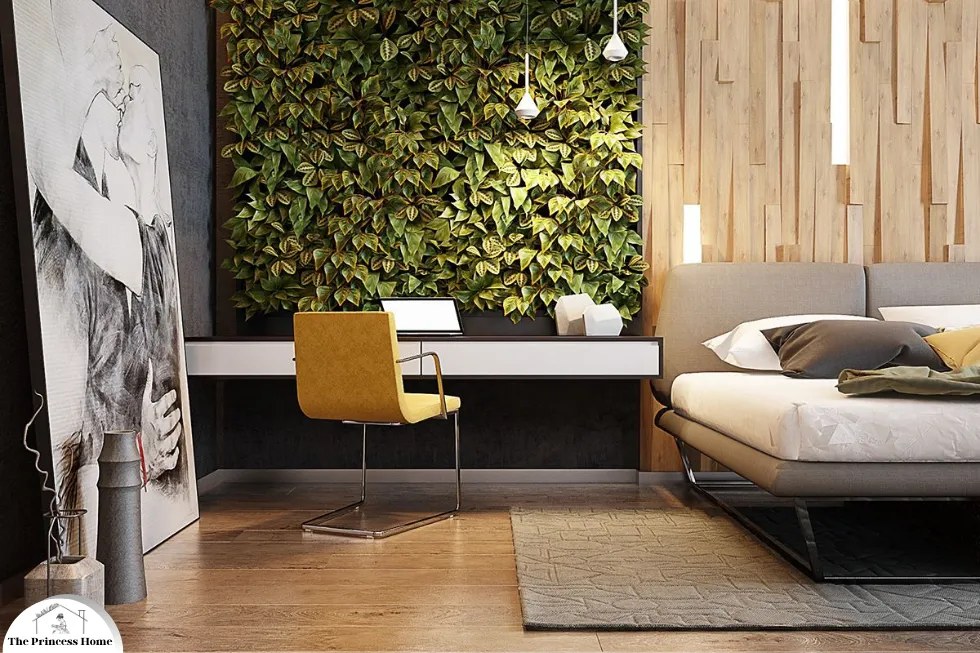
16.Embrace Nature
Bringing natural elements into your decor can create a soothing and rejuvenating atmosphere. Consider incorporating houseplants, natural wood furniture, or stone accents to infuse a sense of the outdoors into your interior. Embracing nature in your interior decor is a wonderful way to create a calming and rejuvenating atmosphere in your home.
Here are some ideas for incorporating natural elements into your decor:
1.Houseplants:
Introduce indoor plants into your space to bring a touch of greenery and freshness indoors. Choose low-maintenance houseplants such as succulents, snake plants, or pothos that thrive in indoor environments. Place them on windowsills, shelves, or as centerpieces on tables to add natural beauty to your decor.
2.Natural Wood Furniture:
Opt for furniture pieces made from natural wood to add warmth and texture to your space. Look for pieces crafted from solid wood or reclaimed wood, such as dining tables, coffee tables, or bookshelves. The natural grain and imperfections of wood add character and charm to your decor.
3.Stone Accents:
Incorporate stone accents such as marble countertops, granite tiles, or quartz accents to add a touch of elegance and sophistication to your space. Stone elements can be used in kitchens, bathrooms, or as decorative features such as fireplace surrounds or accent walls.
4.Organic Textiles:
Choose textiles made from natural fibers such as cotton, linen, wool, or bamboo to add softness and comfort to your decor. Opt for organic cotton bedding, linen curtains, or wool rugs to create a cozy and inviting atmosphere in your home.
5.Natural Light:
Maximize natural light in your space by keeping windows unobstructed and using sheer curtains or blinds to diffuse harsh sunlight. Natural light not only brightens the room but also enhances mood and well-being, creating a welcoming and uplifting environment.
6.Earth Tones:
Decorate with earthy color tones such as warm browns, soft greens, and muted blues to evoke a sense of the outdoors. Use these colors on walls, furniture, and decor accessories to create a cohesive and nature-inspired color palette.
7.Botanical Artwork:
Display artwork featuring botanical motifs such as botanical prints, nature photography, or landscape paintings to bring the beauty of the outdoors into your home. Frame and hang these pieces on walls or place them on shelves or mantels as focal points in your decor.
8.Natural Stone or Wood Flooring:
Consider installing natural stone or wood flooring to create a durable and timeless foundation for your decor. Stone tiles or hardwood floors add natural beauty and sophistication to any room, while also providing a durable and easy-to-maintain surface.
By embracing nature in your interior decor, you can create a peaceful and harmonious living environment that promotes relaxation, rejuvenation, and connection with the natural world.
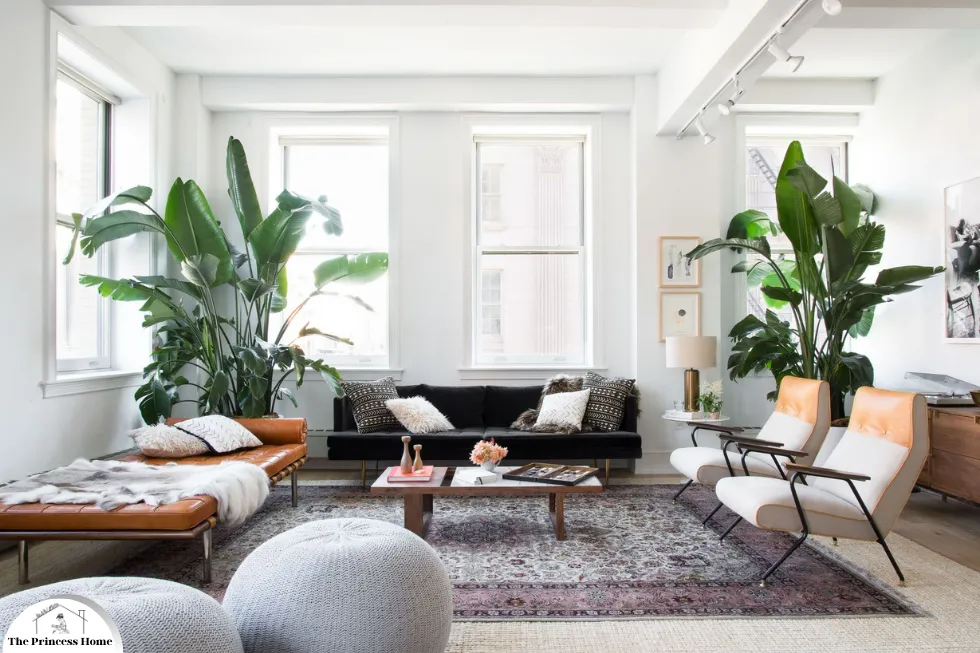
17.Customization
Customized furniture and decor can be a fantastic way to make your home unique. Tailor pieces to your specific needs and preferences. Custom options allow you to choose the materials, colors, and details that suit your style best. Customized furniture and decor offer a fantastic opportunity to personalize your home and create a space that is uniquely yours.
Here are some benefits and tips for incorporating customization into your interior design:
1.Tailored to Your Needs:
Customized furniture allows you to tailor pieces to your specific needs and preferences. Whether you require extra storage, a unique size or shape, or specific features to accommodate your lifestyle, customization ensures that your furniture meets your requirements perfectly.
2.Express Your Style:
Custom options allow you to choose materials, colors, and details that align with your personal style and complement your existing decor. Whether you prefer modern and minimalist, traditional and rustic, or eclectic and bohemian, customization gives you the freedom to express your individuality and create a cohesive look throughout your home.
3.Quality Craftsmanship:
Customized furniture is often crafted with attention to detail and superior craftsmanship, resulting in pieces that are built to last. By investing in quality custom furniture, you can enjoy long-lasting durability and functionality that far surpasses mass-produced alternatives.
4.Unique and One-of-a-Kind:
Customized furniture and decor pieces are inherently unique and one-of-a-kind, making them standout focal points in your home. Whether it’s a custom-designed sofa, a handcrafted dining table, or a bespoke lighting fixture, custom pieces add character and personality to your space.
5.Maximize Space Efficiency:
Customization allows you to maximize space efficiency by designing furniture that fits perfectly within your room’s dimensions and layout. Custom-built storage solutions, built-in cabinetry, and multipurpose furniture can help optimize space and organization in even the smallest of rooms.
6.Collaborate with Designers &Artisans:
Working with designers, artisans, and craftsmen on custom projects allows you to collaborate and bring your vision to life. Whether you’re commissioning a custom piece of furniture or designing a unique decor item, collaborating with talented professionals ensures a result that exceeds your expectations.
7.Consider Functionality &Comfort:
When customizing furniture, consider both functionality and comfort to ensure that the pieces meet your practical needs as well as your aesthetic preferences. Incorporate features such as ergonomic designs, adjustable components, and high-quality materials to enhance usability and comfort.
8.Budget Considerations:
While customization offers many benefits, it’s essential to consider your budget when embarking on custom projects. Work with reputable craftsmen and suppliers to find custom options that align with your budget constraints while still delivering the quality and design you desire.
By embracing customization in your interior design, you can create a home that is truly unique, reflecting your personality, style, and lifestyle preferences. Whether it’s a custom furniture piece, bespoke decor item, or personalized finishing touches, customization adds depth, character, and functionality to your space.

18.Window Treatments
Window treatments, such as curtains and blinds, can play a significant role in your interior decoration. They not only provide privacy and control over natural light but also serve as design elements. Choose window coverings that complement your overall style and color scheme. Window treatments, such as curtains and blinds, are essential elements of interior decoration that can greatly enhance the aesthetic appeal and functionality of your space.
Here’s why they matter and how to choose the right window coverings:
1.Privacy and Light Control:
Window treatments offer privacy and control over natural light entering your home. Depending on your needs and preferences, you can opt for sheer curtains that allow diffused light to filter through, or blackout curtains or blinds for maximum privacy and light control.
2.Design Elements:
Window coverings serve as design elements that can enhance the overall look and feel of your space. Choose window treatments that complement your interior style and color scheme, whether it’s sleek and modern blinds for a contemporary look or elegant drapes for a traditional feel.
3.Texture and Fabric:
Consider the texture and fabric of your window treatments to add depth and visual interest to your decor. Choose fabrics that complement the mood and style of the room, such as light and airy sheer fabrics for a soft, romantic feel, or rich and luxurious velvet curtains for a more opulent look.
4.Size and Scale:
Pay attention to the size and scale of your window treatments in relation to the size of your windows and the room. Floor-to-ceiling curtains can make a small room feel larger and more spacious, while shorter curtains can create a cozy and intimate atmosphere.
5.Hardware and Accessories:
Don’t overlook the importance of hardware and accessories when choosing window treatments. Select curtain rods, finials, and tiebacks that complement the style of your window coverings and add a decorative touch to your windows.
6.Layering Options:
Consider layering different types of window treatments for added versatility and style. For example, you can pair curtains with blinds or shades for both privacy and light control, or add valances or cornices for a polished finishing touch.
7.Maintenance and Care:
Choose window treatments that are easy to maintain and care for, especially if you have young children or pets. Machine-washable curtains or blinds with wipe-clean surfaces can save you time and effort in keeping your windows looking their best.
8.Budget Considerations:
Keep your budget in mind when selecting window treatments, as prices can vary depending on the type of fabric, style, and customization options. Consider investing in high-quality window coverings that will stand the test of time and enhance the overall value of your home.
By choosing window treatments that provide both functionality and style, you can create a beautiful and inviting space that reflects your personality and enhances your overall interior decor. Whether you prefer simple blinds, elegant curtains, or a combination of both, the right window coverings can make a significant difference in your home.

19.Wall Art and Gallery Walls
Wall art can be a powerful design element. Consider creating a gallery wall with a mix of artwork, photographs, and decorative pieces to add visual interest to your space. Ensure that the arrangement is balanced and aesthetically pleasing. Wall art and gallery walls are powerful design elements that can transform the look and feel of any space.
Here are some tips for creating a stunning gallery wall:
1.Choose a Theme or Concept:
Before you start hanging artwork, consider the theme or concept you want to convey. This could be based on a specific color scheme, style, or subject matter. Having a cohesive theme will help tie the gallery wall together and create a harmonious look.
2.Select a Variety of Artwork:
Mix and match different types of artwork, photographs, and decorative pieces to add visual interest to your gallery wall. Consider incorporating a variety of sizes, shapes, and textures to create depth and dimension.
3.Plan Your Layout:
Before hanging any artwork, plan out your gallery wall layout. Arrange the pieces on the floor first to experiment with different configurations until you find a layout that you’re happy with. You can also use painter’s tape to outline where each piece will go on the wall.
4.Create Balance and Symmetry:
Aim for balance and symmetry when arranging your gallery wall. Distribute the artwork evenly across the wall, paying attention to the spacing between each piece. You can achieve balance by varying the sizes and shapes of the artwork while maintaining a consistent visual weight.
5.Consider the Wall Space:
Take into account the size and shape of the wall space where you’ll be creating your gallery wall. If it’s a large, blank wall, you can create a more expansive gallery with multiple rows of artwork. For smaller spaces, a compact arrangement with fewer pieces may be more appropriate.
6.Mix Frames and Matting:
Experiment with different frame styles, colors, and finishes to add visual interest to your gallery wall. Mixing frames can create a dynamic and eclectic look, while coordinating frames can provide a more cohesive and polished appearance. Similarly, consider using mats to highlight certain pieces and create visual contrast.
7.Use Hanging Hardware:
Ensure that your artwork is securely hung using appropriate hanging hardware. Use picture hooks, nails, or adhesive hooks designed for the weight of your artwork to prevent damage to your walls. Consider using a level or measuring tape to ensure that your artwork is hung straight and evenly spaced.
8.Personalize Your Gallery:
Don’t be afraid to incorporate personal touches into your gallery wall, such as family photographs, mementos, or DIY artwork. These personal touches will add warmth and personality to your space and make your gallery wall truly unique to you.
By following these tips, you can create a stunning gallery wall that adds personality, style, and visual interest to your space. Whether it’s a focal point in your living room, hallway, or bedroom, a well-curated gallery wall can elevate the overall look and feel of any room in your home.

20.Maintenance and Upkeep
Finally, maintaining the beauty of your interior is essential. Regular cleaning, repairs, and updates are crucial to ensure that your decor remains in top condition. Consider reevaluating your interior decoration periodically to adapt to changing needs and trends. Maintaining the beauty and functionality of your interior decor is essential for preserving its aesthetic appeal and ensuring a comfortable living environment.
Here are some key maintenance and upkeep tips to keep your interior looking its best:
1.Regular Cleaning:
Establish a routine cleaning schedule to keep your interior clean and tidy. Dust furniture, vacuum carpets and rugs, mop floors, and wipe down surfaces regularly to remove dirt, dust, and debris. Pay attention to high-traffic areas and frequently used spaces to maintain cleanliness.
2.Repairs and Maintenance:
Promptly address any repairs or maintenance issues to prevent them from escalating into larger problems. Fix leaky faucets, repair damaged furniture or fixtures, and replace worn-out or malfunctioning components as needed. Regular maintenance helps prolong the lifespan of your interior decor and prevents costly repairs down the line.
3.Update and Refresh:
Periodically reevaluate your interior decoration to adapt to changing needs, preferences, and trends. Consider updating your decor with new accessories, artwork, or textiles to give your space a fresh look and feel. Experiment with different colors, patterns, and styles to keep your interior design dynamic and engaging.
4.Seasonal Decor:
Embrace the changing seasons by incorporating seasonal decor elements into your interior design. Swap out lightweight fabrics and bright colors for cozy textures and warm tones in the fall and winter months. Add seasonal accents such as throw pillows, blankets, and decorative accessories to reflect the spirit of each season.
5.Furniture Protection:
Protect your furniture and upholstery from stains, spills, and damage by using furniture covers, coasters, and protective pads. Consider applying fabric protectors to upholstery and wood sealants to furniture surfaces to guard against everyday wear and tear. Regularly rotate cushions and upholstery to distribute wear evenly.
6.Monitor Indoor Air Quality:
Maintain good indoor air quality by regularly cleaning or replacing air filters in HVAC systems, using air purifiers, and incorporating indoor plants to naturally filter the air. Proper ventilation and humidity control also help prevent mold and mildew growth and promote a healthy living environment.
7.Organizational Systems:
Implement organizational systems such as storage bins, shelving units, and closet organizers to keep clutter at bay and maintain a tidy and organized space. Regularly declutter and purge items that are no longer needed or used to free up space and keep your interior looking streamlined and uncluttered.
8.Professional Maintenance:
Consider hiring professionals for specialized maintenance tasks such as carpet cleaning, upholstery cleaning, and HVAC maintenance. Professional services ensure thorough and effective cleaning and maintenance, extending the life of your interior decor and keeping it looking its best.
By prioritizing maintenance and upkeep, you can preserve the beauty and functionality of your interior decor for years to come. Regular cleaning, repairs, updates, and organization are essential to creating a comfortable, inviting, and well-maintained living environment that you can enjoy for years to come.
In conclusion, interior decoration is a creative and dynamic process that allows you to express your personality and make your home truly yours. Remember that the most important aspect is that your space should make you feel comfortable and happy. Use these tips as a starting point, and don’t hesitate to experiment, get inspired, and adapt your decor to your evolving taste and needs. Your home should be a reflection of who you are, and with careful planning and creativity, you can achieve an interior that is both beautiful and functional.
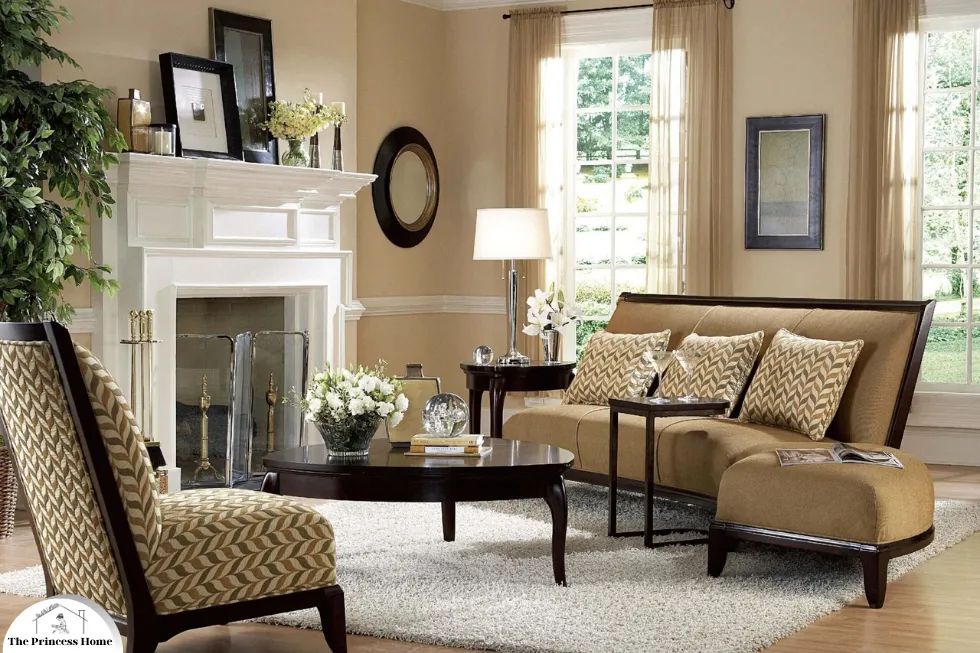
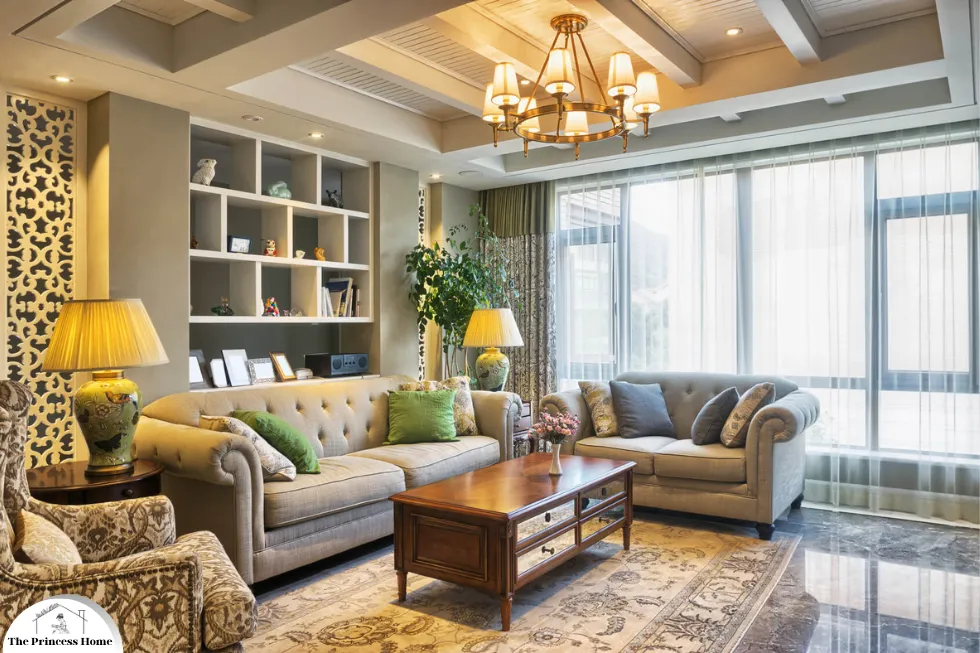
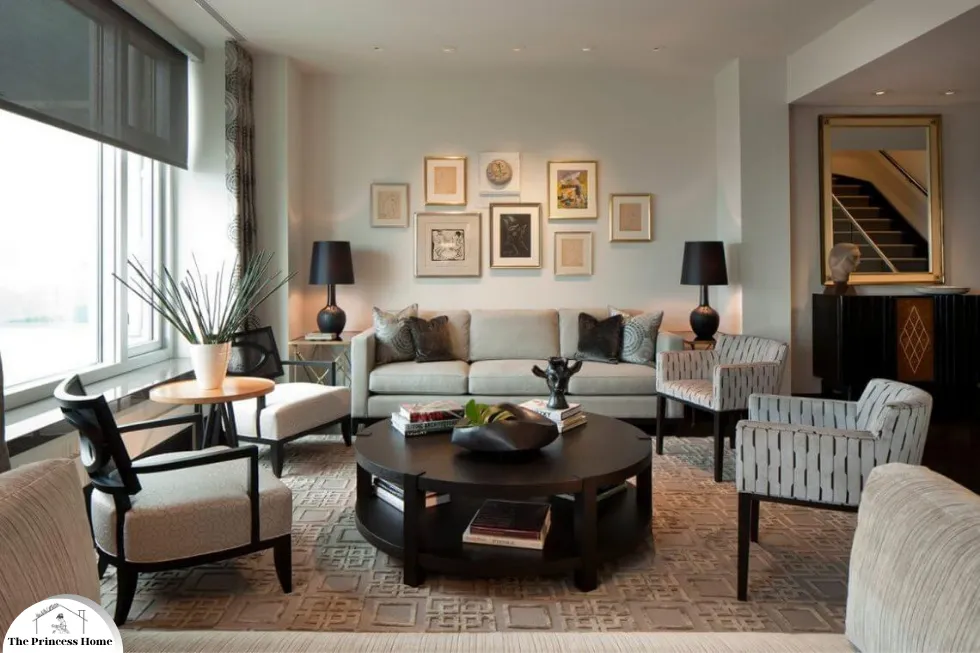

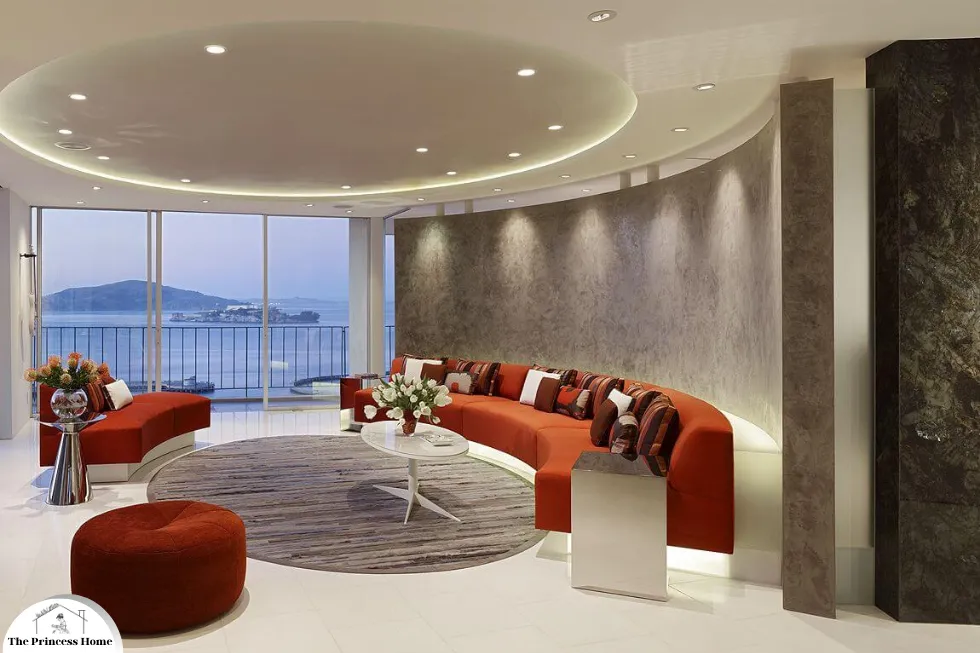
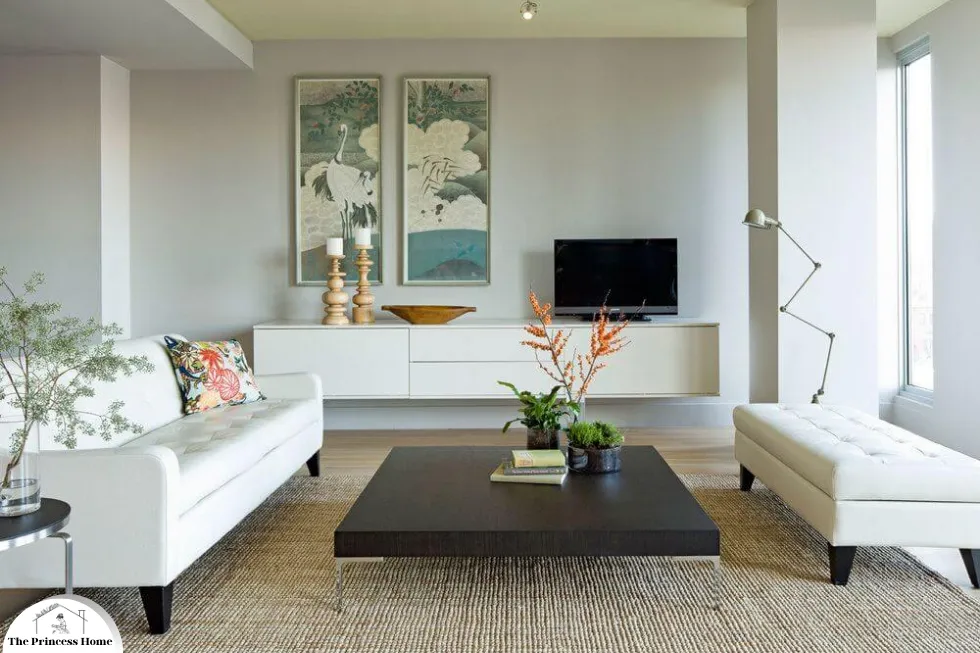

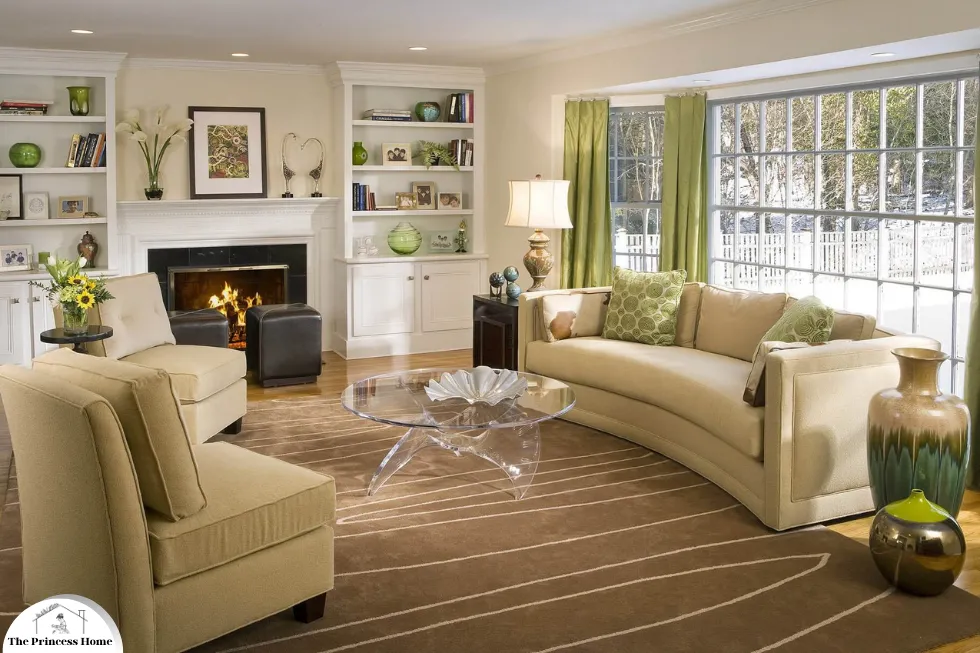

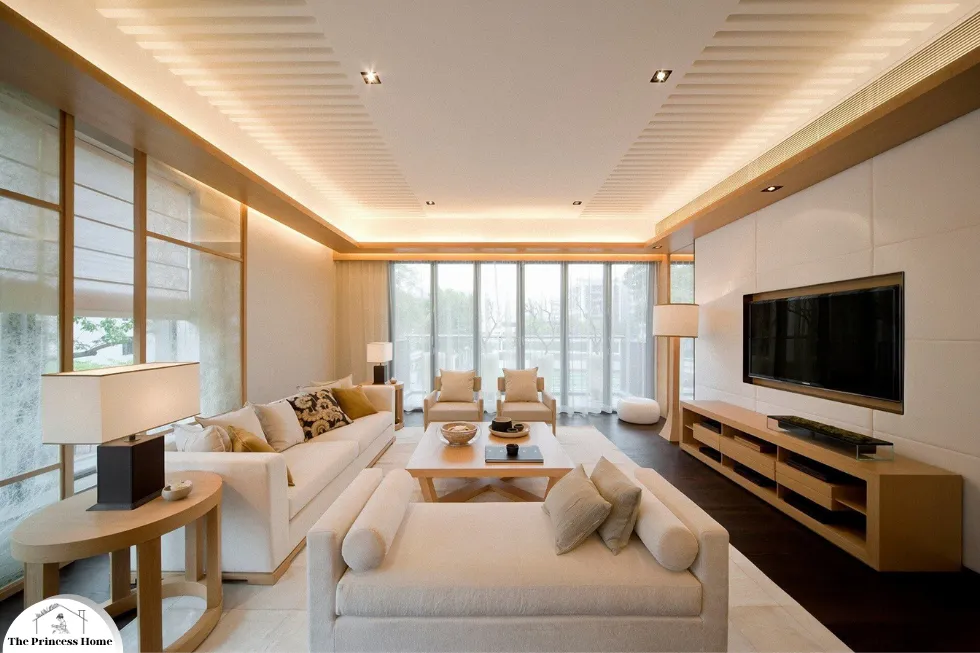
Certainly! Here are some frequently asked questions related to interior decoration and their answers:
Q1: How can I determine my personal interior decoration style?
A1: Discovering your personal style is a crucial first step in interior decoration. Start by browsing interior design magazines, websites, and social media platforms to find images that resonate with you. Create a mood board of your favorite designs, colors, and elements. This will help you identify common themes and determine your style, whether it’s contemporary, traditional, industrial, or eclectic.
Q2: What’s the importance of lighting in interior decoration?
A2: Lighting is a fundamental aspect of interior decoration. It not only illuminates a space but also affects its mood and functionality. Properly chosen and placed lighting fixtures can make a room feel cozier, more spacious, or more inviting. Ambient lighting provides overall illumination, task lighting is ideal for specific activities, and accent lighting highlights decorative elements.
Q3: How can I make a small room look more spacious?
A3: Small rooms can appear larger with some strategic design choices. Use light colors on the walls and ceiling to create an open and airy feeling. Incorporate mirrors to reflect light and give the illusion of space. Choose multi-functional furniture that maximizes storage, and keep the room clutter-free to maintain a sense of openness.
Q4: What are some tips for decorating on a budget?
A4: Decorating on a budget is achievable with the right strategies. Consider DIY projects, upcycling, and shopping at thrift stores or flea markets for unique and affordable pieces. Repurpose existing furniture with a fresh coat of paint or new hardware. Focus on key decor elements like throw pillows, artwork, and accessories to make a big impact without breaking the bank.
Q5: How do I create a cohesive look in an open floor plan?
A5: Cohesion in an open floor plan can be achieved by using a consistent color palette throughout the space. Employ area rugs to define different zones or seating areas. Utilize furniture placement and lighting to create subtle divisions while maintaining a sense of flow and openness.
Q6: Should I follow the latest interior design trends or stick to classic styles?
A6: The choice between following trends or sticking to classic styles depends on your personal preferences. It’s often best to blend both approaches. Invest in timeless, quality pieces for major elements like furniture and opt for trendy decor accents that can be easily updated as styles evolve.
Q7: How can I incorporate sustainability into my interior decoration?
A7: Sustainable interior decoration is becoming increasingly popular. Look for furniture made from eco-friendly materials, such as reclaimed wood or bamboo. Use low-VOC paint and finishes to improve indoor air quality. Shop for vintage or second-hand items to reduce waste, and consider energy-efficient lighting and appliances to reduce your carbon footprint.
Q8: What should I consider when decorating a child’s room?
A8: When decorating a child’s room, safety and functionality are paramount. Choose child-friendly, non-toxic materials and finishes. Incorporate ample storage for toys and belongings. Consider versatile furniture that can grow with your child, and allow them to have a say in the decor to make the room feel like their own space.
Q9: How can I add personality to my interior decor?
A9: Personalizing your interior is all about incorporating elements that reflect your interests and experiences. Display family photos, artwork you love, and items from your travels. Mix and match textures, colors, and patterns that resonate with you. The key is to make your space a true reflection of your personality and lifestyle.
Q10: What are some common interior decoration mistakes to avoid?
A10: Common interior decoration mistakes include over-cluttering, neglecting proper lighting, ignoring scale and proportion, using too many bold patterns, and following trends blindly. To avoid these pitfalls, plan carefully, balance elements, and always prioritize your personal style and comfort.
Remember that interior decoration is a highly personal endeavor, and there are no strict rules. These FAQs and answers should serve as guidelines to help you navigate the world of interior decoration, but feel free to adapt and adjust them to suit your unique vision for your home.




